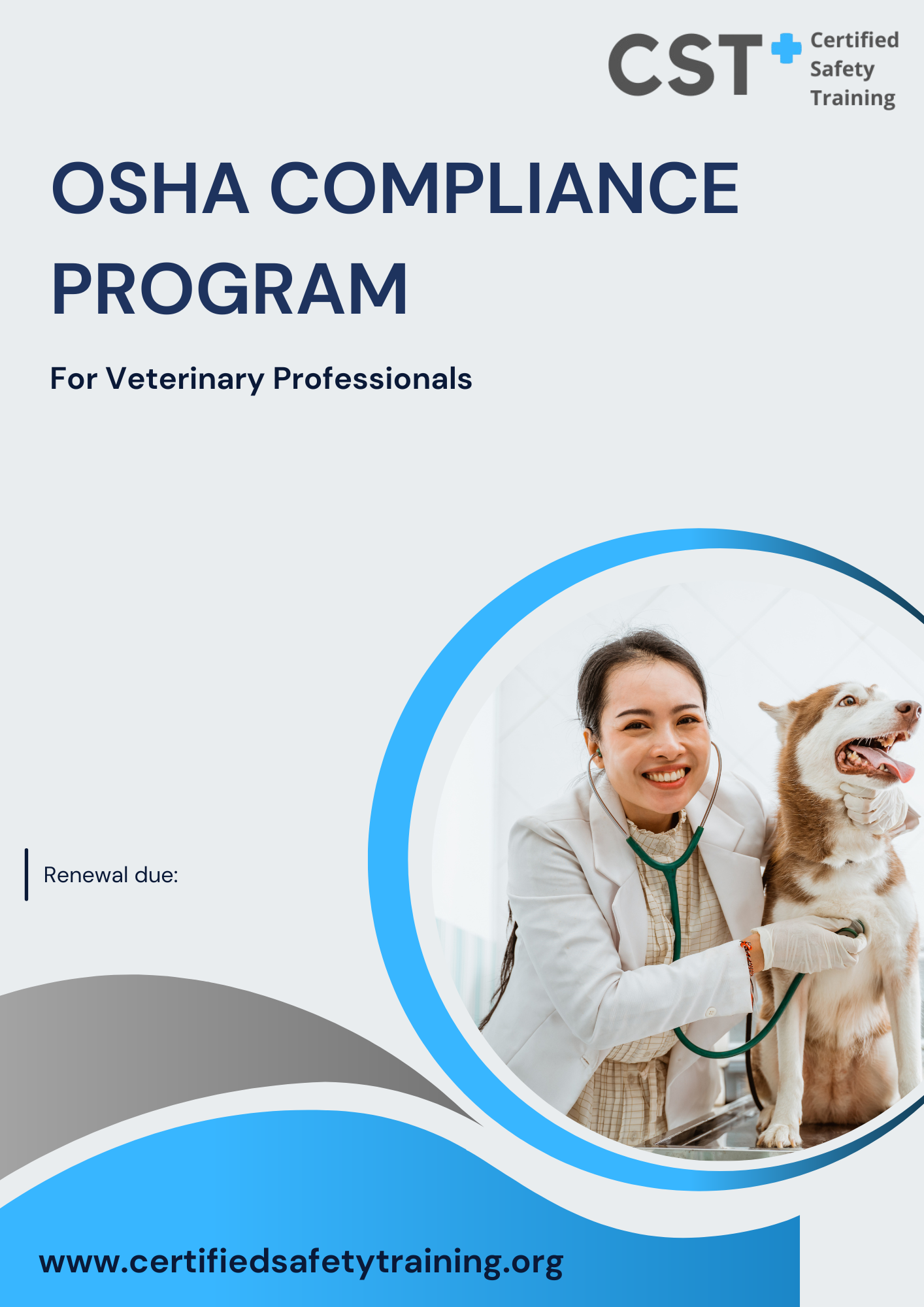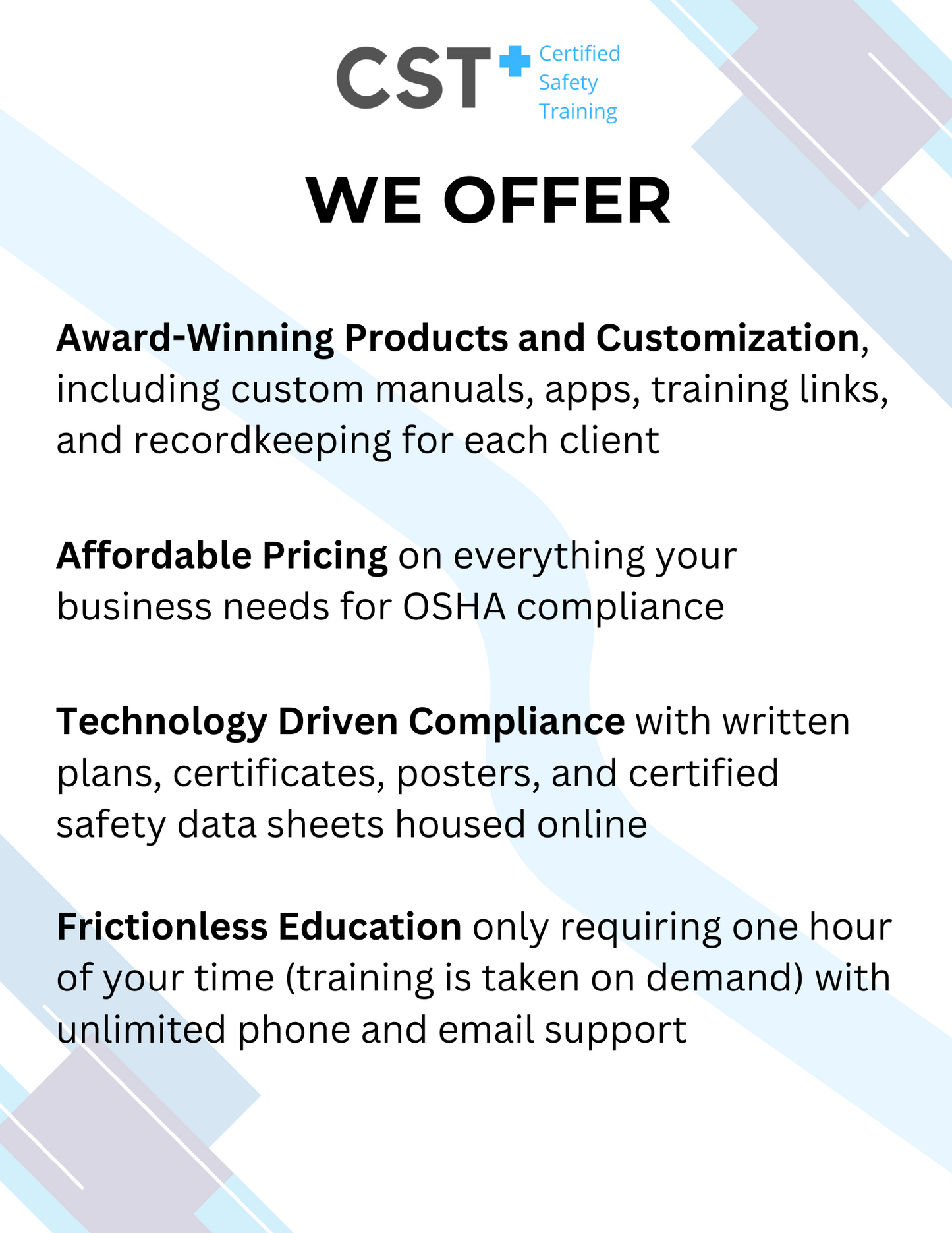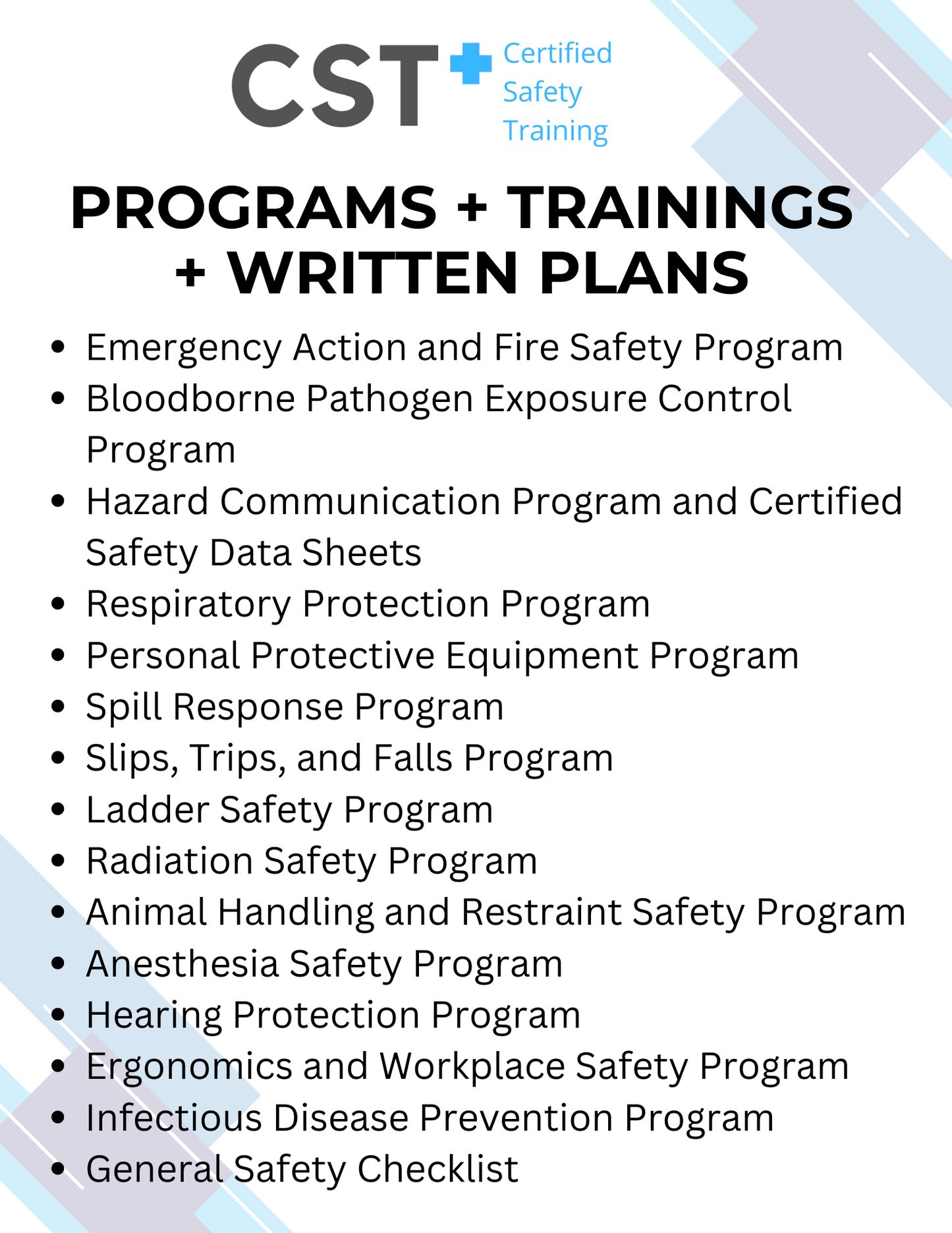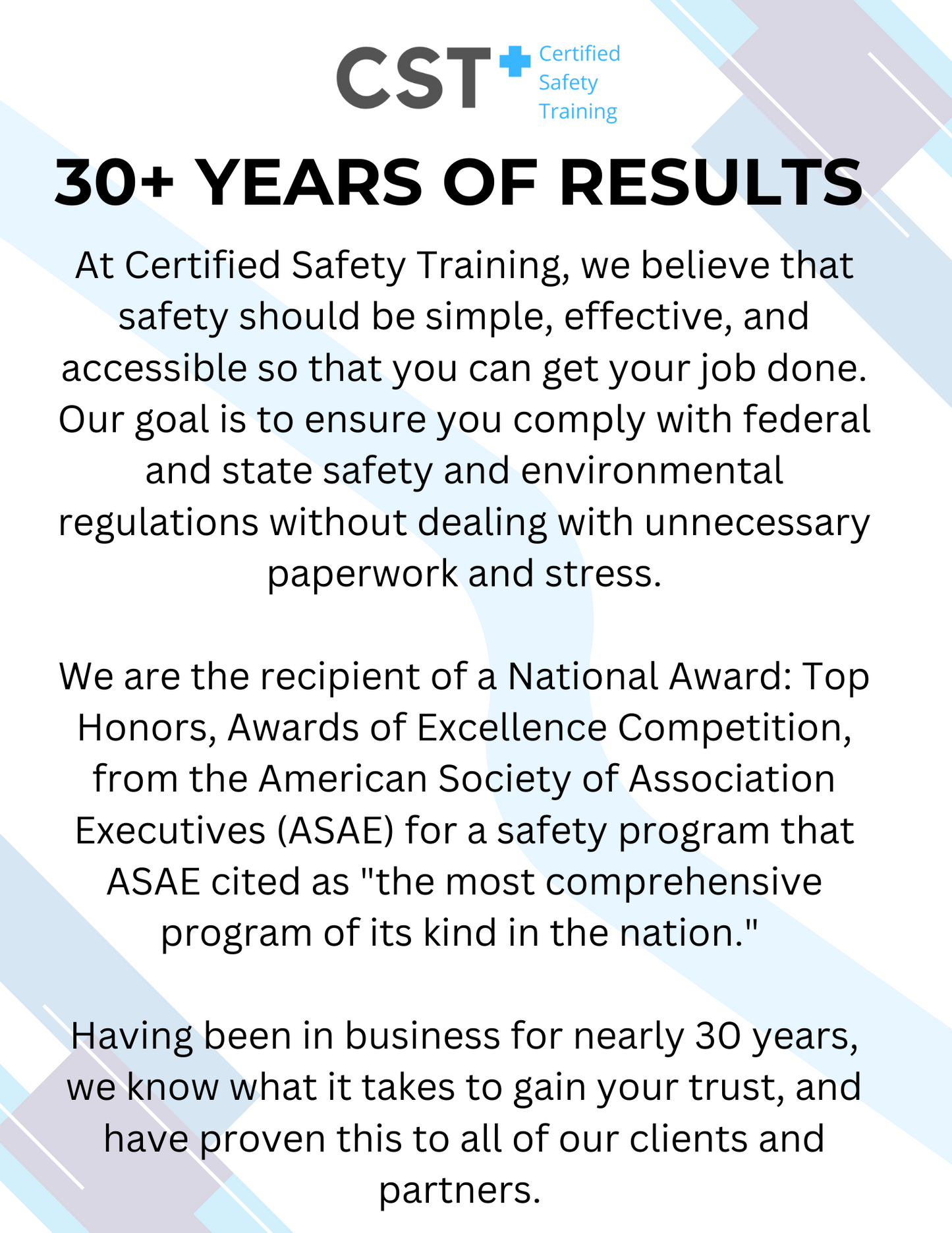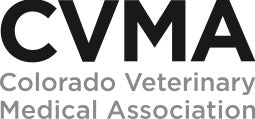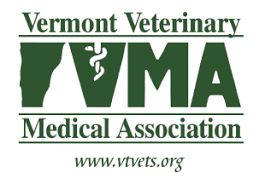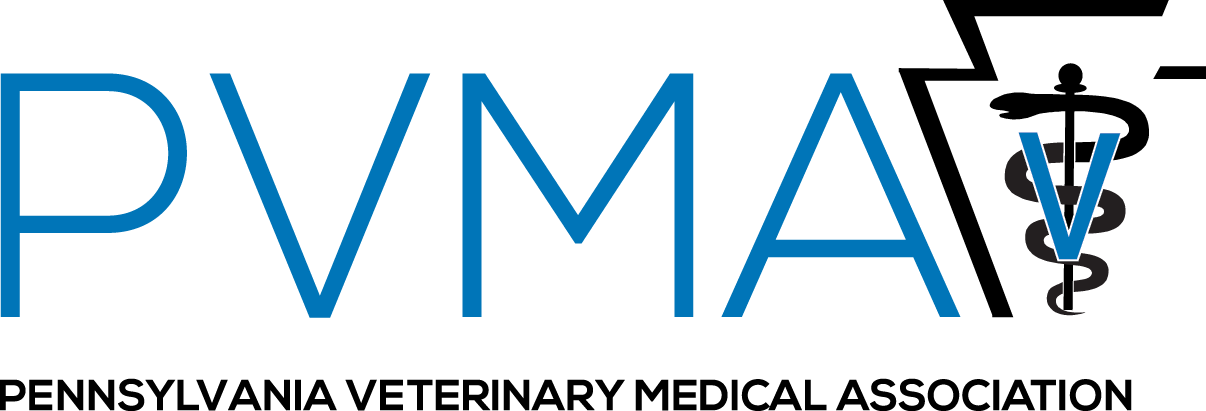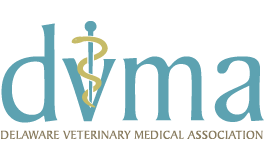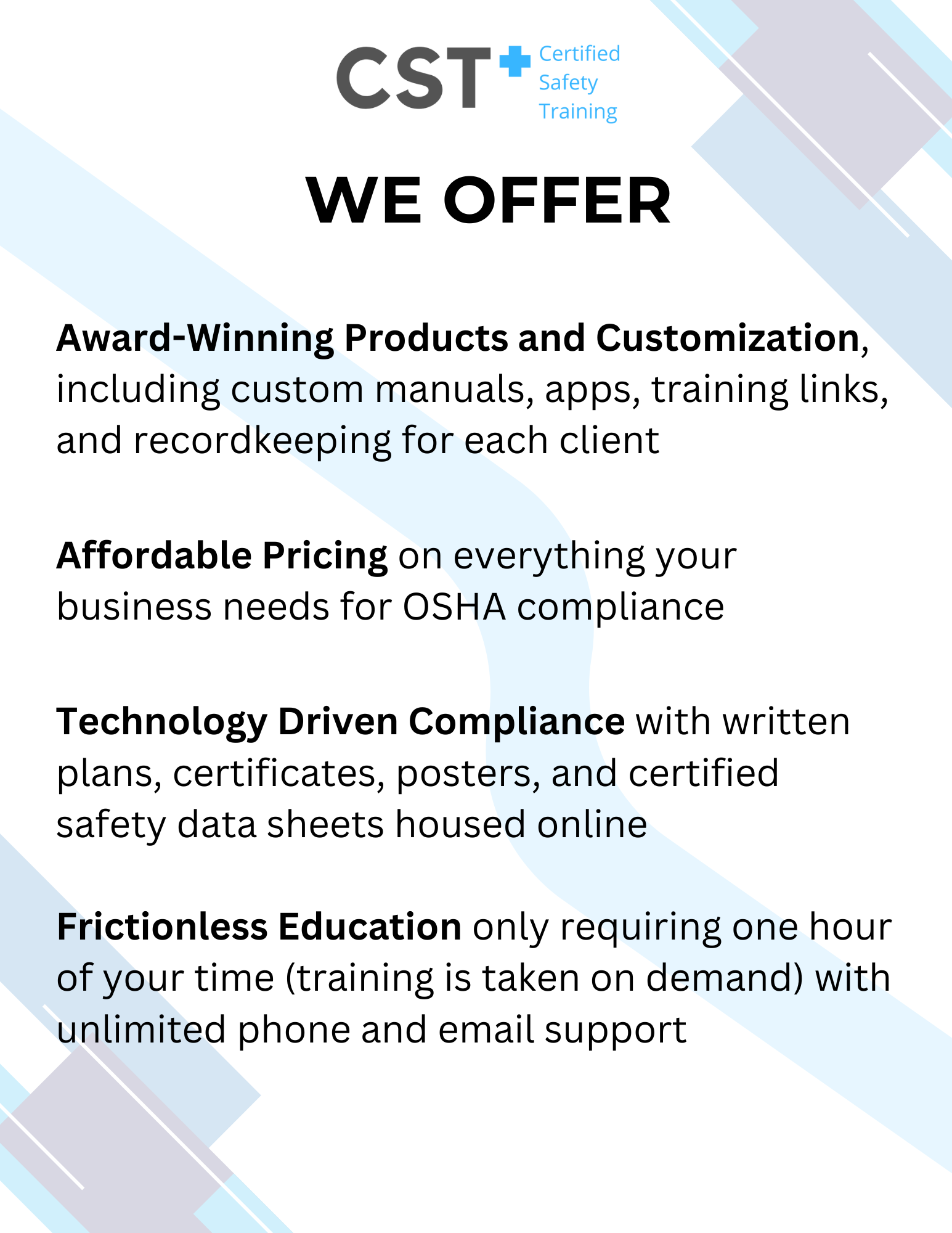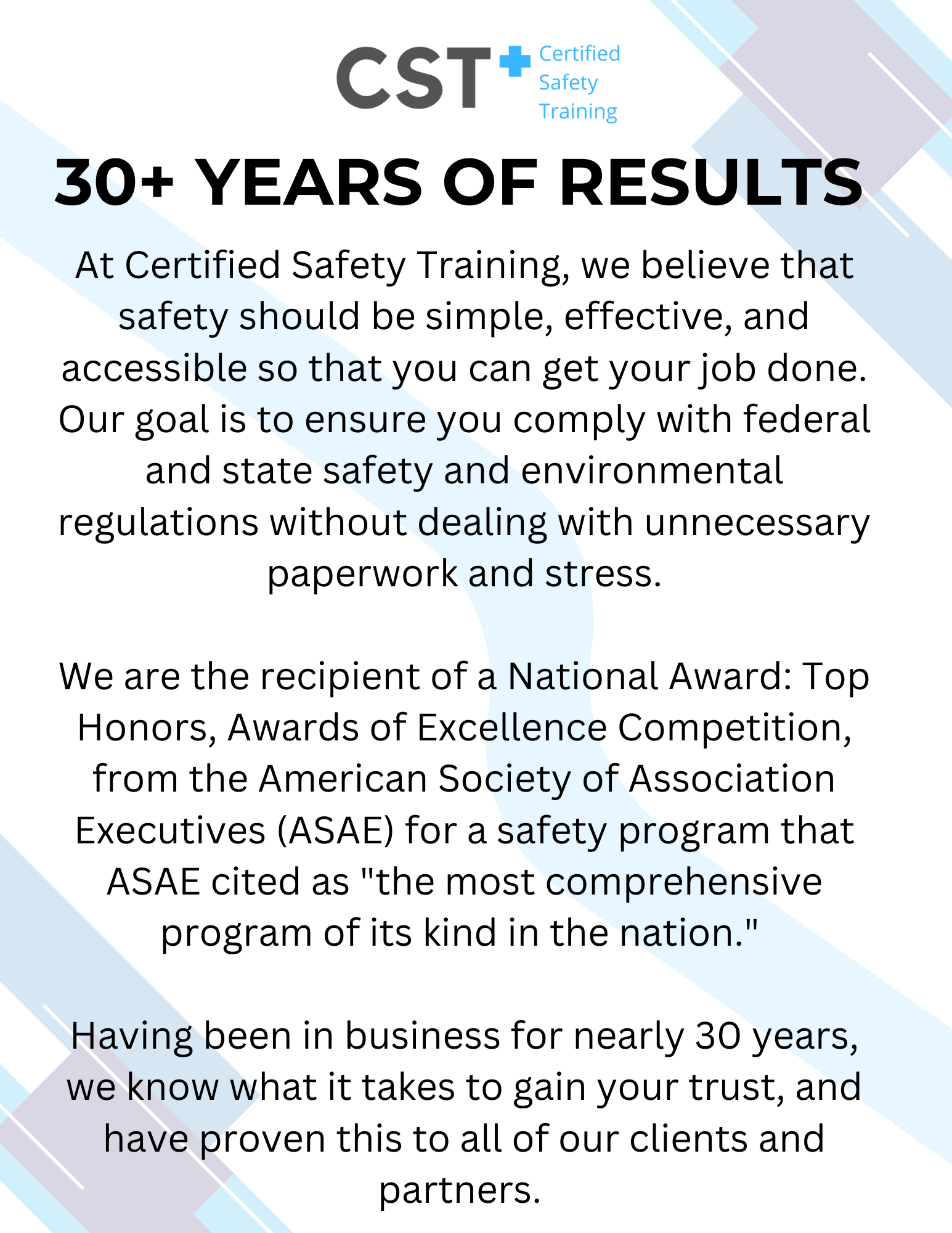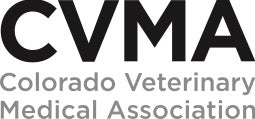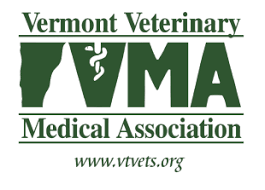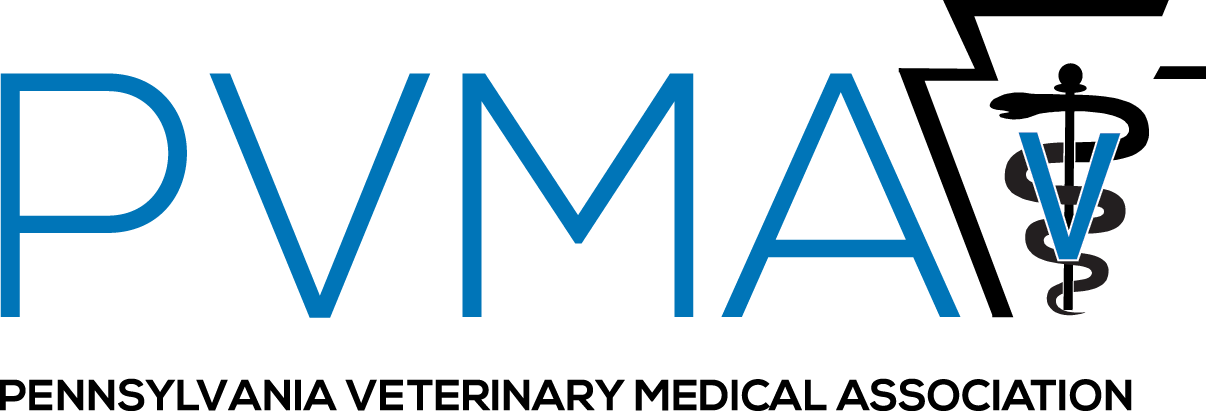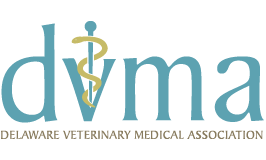1
/
of
12
OSHA Compliance Essentials Veterinary Hospitals - VetInsure - Monthly Pricing
OSHA Compliance Essentials Veterinary Hospitals - VetInsure - Monthly Pricing
Regular price
$45.00
Regular price
Sale price
$45.00
Unit price
/
per
Couldn't load pickup availability
Share
Compliance Essentials
Award-Winning: Custom OSHA Manual + Unlimited Online Training include:
Online Training Courses:
- Veterinary Medical Safety Course (CE 1.5)
- Veterinary Non-Medical Safety Course
- Veterinary Workplace & Sexual Harassment Course
- Veterinary Workplace Violence Course
- Veterinary Preventing Dog Bites Course
- Veterinary Preventing Cat Bites & Scratches Course
- Veterinary Safe Driving Course
- Veterinary Laser Safety Course
Essential Compliance Materials:
- Custom Digital OSHA Manual
- Online Recordkeeping
- Access to OSHA FAQs
Training Topics Include:
- General Workplace Safety
- Animal Handling Safety
- Infection Prevention
- Bloodborne Pathogens
- Workplace Violence Prevention
- Sexual Harassment Awareness
- Safe Driving
- Laser Safety
- Bite Prevention (Dogs & Cats)
Each Program Comes Equipped With:
- Written Compliance Plan
- Recordkeeping requirements
- Online access to the plan
- Training Topics and Online Training
- Employee Training Documentation
- Trainer Qualifications
Online OSHA Trainings Come With:
- Real-Time Feedback
- Unlimited Retakes
- Customized Certificate and Proof of Training
- Employee Training Documentation
- No Logins Required
- Cloud-based Recordkeeping
- Compatible on any Computer, Mobile or Tablet Device
- Unlimited technical assistance, by telephone and email
Who is “At-Risk”?
All full- and part-time employees, workers, outside contractors and anyone who comes into contact with chemicals and deceased remains during their work at a veterinarian clinic are considered at-risk.
Everyone is responsible for creating and maintaining a safe and secure work area. There are no exceptions. Attending training sessions annually will ensure at-risk employees are:
- knowledgeable about the types of bloodborne pathogens encountered
- familiar with proven methods to reduce exposure risks, and
- aware of the proper use of personal protection equipment.
